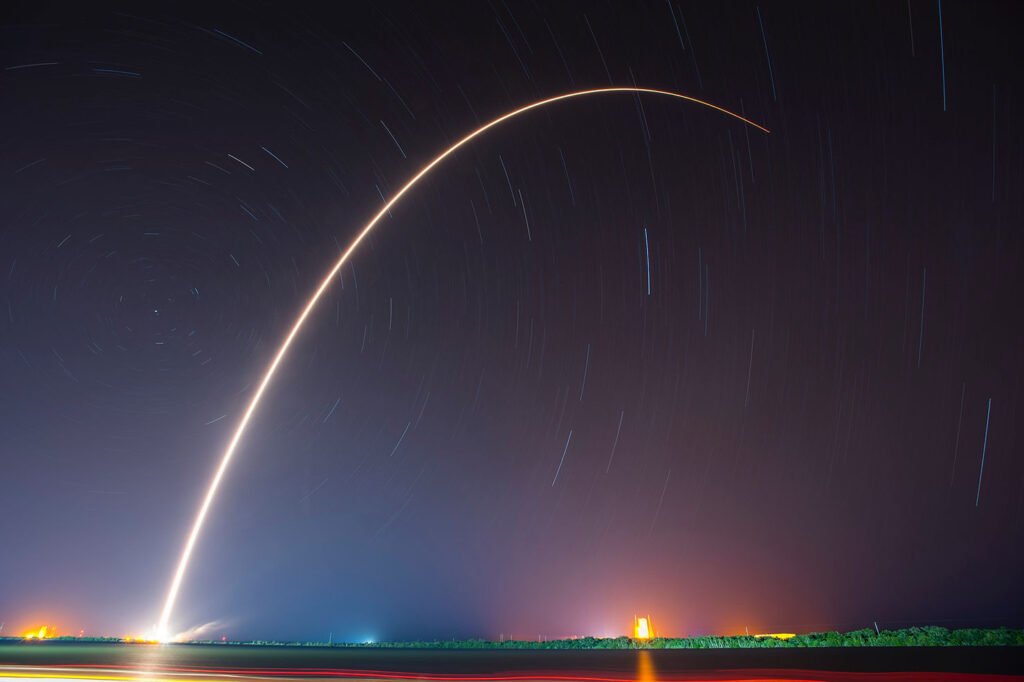As the global balance of power increasingly pivots beyond Earth’s atmosphere, the intersection of geopolitics and space exploration has never been more consequential. Under President Donald Trump’s renewed administration, sweeping economic reforms—including broad-based tariffs and nationalist industrial policies—are being paired with ambitious declarations of space supremacy. At the same time, China is asserting itself as a formidable rival, advancing its lunar objectives and asserting strategic goals in cislunar space. In this new era of great power competition, space is no longer the final frontier; it is a central stage for geopolitical rivalry.

This article examines how Trump’s tariff policy, industrial strategy, and rhetoric of “economic independence” are shaping the U.S. space program, especially in relation to the competition with China. It also considers the pivotal role of private space actors, most notably Elon Musk, whose influence continues to redefine both the capabilities and strategic calculus of U.S. space dominance.
Trump’s Tariff Policy and Its Implications for Space
Economic Sovereignty Meets Industrial Strategy
President Trump’s second administration has launched a sweeping tariff regime under the banner of “Liberation Day,” instituting a minimum 10% tariff on all U.S. imports and imposing elevated rates on key trade partners such as China (104%), the EU (20%), Japan (24%), and Vietnam (46%). Trump justifies these tariffs as a means to revitalize domestic manufacturing, close trade deficits, and safeguard national sovereignty—including technological independence.
From a space industry standpoint, this protectionist policy presents a mixed picture. On one hand, the tariffs could incentivize reshoring of aerospace manufacturing, favoring domestic suppliers of satellite components, avionics, and launch systems. U.S. firms operating in strategic sectors—such as propulsion systems, advanced materials, and lunar habitat construction—may benefit from subsidies or reduced foreign competition.
However, the downsides are significant. The global space industry is inherently international. Supply chains for satellite electronics, solar panels, and cryogenic components often span continents. Elevated tariffs increase production costs, disrupt supply chains, and may delay key programs such as NASA’s Artemis initiative or Department of Defense space capabilities. Moreover, international allies may view the U.S. approach as isolationist, risking collaboration in multilateral missions and weakening the diplomatic leverage of space partnerships.
The U.S.–China Space Rivalry: A Strategic Frontier
Competing Lunar Visions
Both the United States and China are engaged in a rapidly intensifying space race, centered on the Moon’s south pole. The U.S.-led Artemis program—supported by NASA, private firms like SpaceX, and allied space agencies—aims to land astronauts on the Moon by 2025 and establish a sustainable lunar base. China, for its part, has officially acknowledged the rivalry for the first time, positioning its International Lunar Research Station as a peer competitor.
The Moon’s south pole is rich in water ice, a vital resource for life support and fuel production. Control over this region may determine future power projection in space. China’s state media and science officials have framed this contest in terms of technological superiority and operational efficiency, drawing comparisons to the Cold War’s original moon race.
The U.S., meanwhile, views this rivalry through a strategic lens. NASA’s new administrator nominee, Jared Isaacman, has warned against deprioritizing lunar efforts in favor of Mars, arguing that ceding the Moon to China could irreparably damage America’s space leadership.
The Role of Law and Governance
A central concern is that neither China nor the U.S. has clearly defined how claims of lunar territory or infrastructure will comply with the Outer Space Treaty. The Artemis Accords, promoted by the U.S., call for transparency and interoperability, while China has yet to sign on. Without mutual agreement, a “race to stake claims” could escalate into legal and geopolitical confrontation.
Elon Musk and the Privatization of Space Power
A Non-State Actor with National Influence
No analysis of U.S. space strategy would be complete without assessing the role of Elon Musk and SpaceX. As the primary contractor for NASA’s Artemis lunar lander (Starship), a global leader in satellite deployment (Starlink), and a supplier of the Pentagon’s National Security Space Launch program, Musk has created a vertically integrated space enterprise with global reach.
His influence is paradoxical: SpaceX accelerates U.S. capabilities, but Musk’s public behavior and mercurial political views sometimes introduce volatility into strategic planning. Moreover, Musk’s recent emphasis on Mars colonization has sparked debate about the correct near-term priorities of U.S. space policy. Jared Isaacman, a SpaceX partner and the civilian commander of the Polaris Program, has publicly dissented, emphasizing lunar goals first—an implicit critique of Musk’s Mars-first agenda.
Still, the strategic utility of Musk’s innovations cannot be overstated. Starship’s eventual success would drastically reduce launch costs, enable interplanetary cargo transport, and fortify U.S. logistical capabilities in orbit and beyond. His satellite constellations already serve as key infrastructure in geopolitical flashpoints, including Ukraine, suggesting that private space actors will remain integral to 21st-century power projection.
Conclusion: Toward a Coherent Strategy for Space Leadership
The convergence of Trump-era economic nationalism, an assertive China, and powerful private space actors places the U.S. at a crossroads. While the new tariffs may foster domestic industry, they risk disrupting the international cooperation and supply chains critical to space leadership. China’s rising capabilities demand a clear and coordinated U.S. strategy—balancing lunar and Martian ambitions, aligning public-private efforts, and reinforcing international norms.
The success or failure of this approach will shape not only the next chapter of space exploration but also the geopolitical order of the mid-21st century. As national borders dissolve in orbit, the question is no longer whether space is political—but how wisely political choices are made in space.


